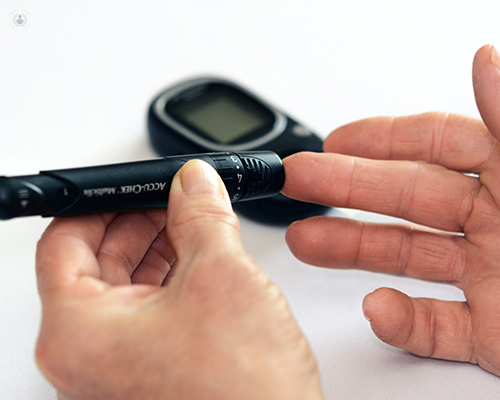Insulin resistance: symptoms and diagnosis
Written in association with:Insulin resistance is one of the driving factors that can lead to type 2 diseases. In the first part of an in-depth look at this condition, renowned interventional cardiologist Dr Konrad Grosser offers his expert insight into the condition. He explains what insulin resistance is, as well as how it is diagnosed.

What is insulin resistance?
Insulin resistance is a condition that occurs when the body's cells become less responsive to insulin, a hormone produced by the pancreas that helps regulate blood sugar levels. Insulin resistance is often considered a precursor to type 2 diabetes, a chronic disease that affects millions of people worldwide.
In addition to diabetes, insulin resistance has been linked to a range of other health problems, including cardiovascular disease, cancer, and cognitive decline. The exact mechanisms underlying insulin resistance are not fully understood, but several factors have been implicated in its development. These include chronic inflammation, oxidative stress, and abnormal lipid metabolism. Insulin resistance has also been linked to a range of lifestyle factors, such as a sedentary lifestyle, a diet high in processed foods and sugar, and being overweight or obese.
Insulin resistance has been linked to an elevated risk of cardiovascular disease, independent of established risk factors like smoking and high blood pressure, according to a study published in the Journal of the American College of Cardiology. The study also discovered a link between elevated levels of oxidative stress and inflammation in the body, both of which are known to have a role in the development of cardiovascular disease.
An additional study that was published in the journal Nature Medicine discovered that older people with insulin resistance had a higher risk of cognitive deterioration. The study discovered that people with insulin resistance had lower cognitive test results and an increased likelihood of developing dementia, including Alzheimer's disease.
Will insulin resistance always develop into diabetes?
Although insulin resistance is sometimes thought of as a precursor to type 2 diabetes, it is crucial to remember that not everyone who has insulin resistance will go on to have diabetes. Insulin resistance, however, can increase the risk of various health issues even in the absence of diabetes and should be addressed with a change in lifestyle, and in some cases may require medication.

How is insulin resistance diangosed?
Typically, a combination of blood testing and physical examinations is used to detect insulin resistance. The fasting glucose test is a typical test to gauge insulin resistance. This test gauges the amount of glucose in the blood following a period of fasting. The oral glucose tolerance test, which gauges the body's reaction to a glucose load following a fast, is another examination that might be employed.
Doctors may also do a physical examination to check for indications of insulin resistance. These could include high blood pressure, abnormal cholesterol levels, or extra abdominal fat.
The hyperinsulinemic-euglycemic clamp technique and the homeostasis model assessment of insulin resistance (HOMA-IR) are two examples of more sophisticated tests that certain doctors may employ to identify insulin resistance.
It is crucial to remember that there are no established diagnostic criteria for insulin resistance at the moment. To detect insulin resistance, some researchers have proposed using a combination of fasting glucose levels, insulin levels, and HOMA-IR scores; however, additional study is required to establish a precise diagnostic cut-off.
Dr Konrad Grosser is a leading integrated functional cardiologist based in Canterbury, Maidstone & Margate. If you would like to book an appointment with Dr Grosser, you can do so today vis his Top Doctors profile.



